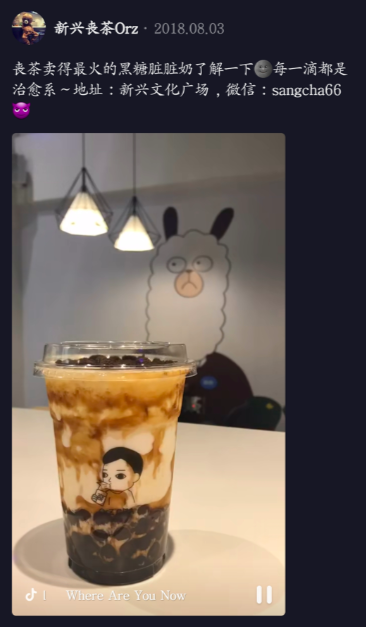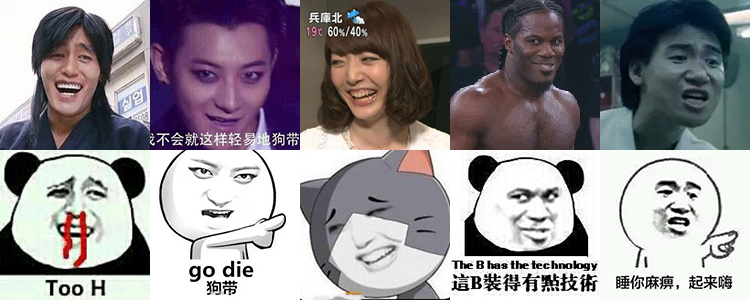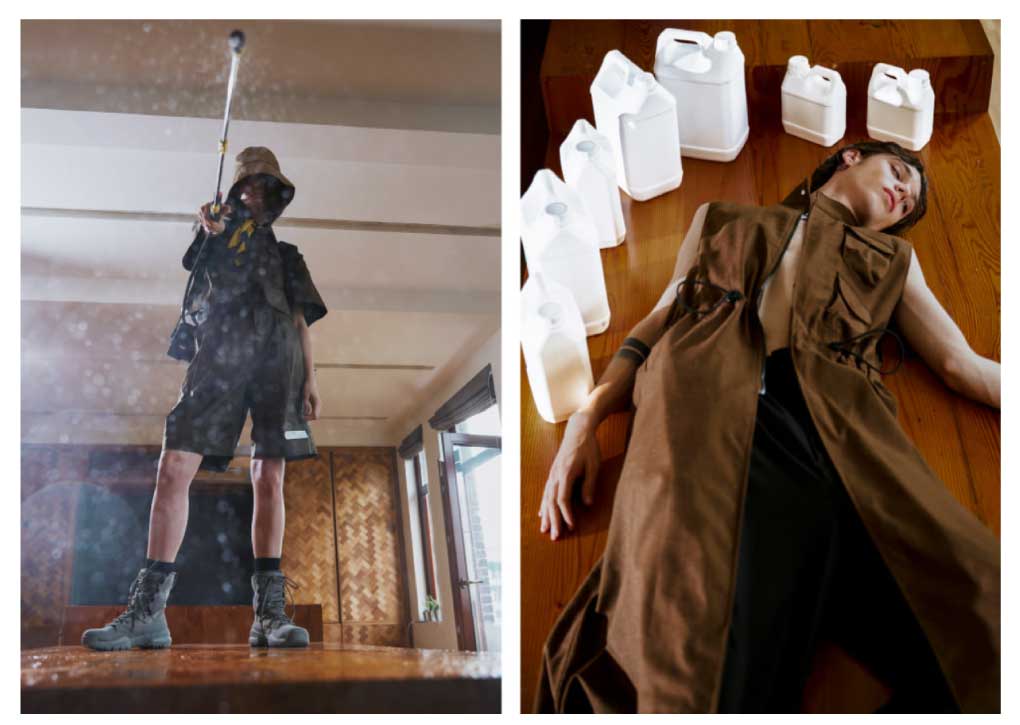Social listening represents all the social trends and challenges occurring mainly on social media and the way brands use them for marketing and communication. In a fast-growing economy like China, it is indispensable for brands to get closer to their audience by being present on Social Media. Any challenge or trend can create a marketing buzz for brands. For example, “Sāng” (桑) in Chinese means “like sucks”; this movement of assuming the defeats of life pushed a tea brand to take the name “Sāng chá” (桑茶) to create a sad tea line that worked very well.

Social listening is based on conversations
Take advantage of one-shot campaigns
These campaigns are not anticipated and get ephemeral attention (24 hours maximum). One-shot campaigns are spontaneous and can lead to huge buzzes, such as the “egg” breaking the internet or the Kendal Jenner #hearthair. Sometimes the less prepared campaigns are the most efficient ones; but to surf on a buzz, you need to be aware 24/7.
Memes are a source of buzz
Memes are clearly the phenomenon of the generation. Putting a non-related text with an out-of-context picture in order to generate emotions is a guaranteed success for brands. Using Photoshop to divert the first purpose of an image can be taken to your advantage if the moment is chosen right. For example during Worldcup, the flying Dutch football player was used for branding as a meme and created an international buzz.

Knowing your memes is the starter pack:
- “The floor is…“
- “Me/also me” mechanics
- Hashtag management
- “Troll” fever
- “TFW” (“That feeling when…“), “Overhead“, “Bomboclaat“… expressions
- “… VS…“, “expectations/reality“, “before/after” mechanics
How to Hijack in digital marketing
Hijack consists of taking control of something that does not belong to you in order to surf on its buzz. Surfing on someone else’s success at its highest extent can be a successful strategy; you didn’t create anything but you keep the associated buzz and create awareness for your brand. Some concepts are brilliant but are not highlighted in a good way, so the secret here to smell good buzzes is to practice more and more to better know your market. You also have to be faster than your competitors when an idea turns into an opportunity because often a lot of brands are creating marketing on the same idea. This phenomenon is called the Social war room: taking an idea really quickly before your competitors.
Stay aware of challenges…
Some really bad challenges occurred in China, especially regarding weight and body shapes, like the A4 challenge for example. These challenges invited young women to post a picture of their body with an A4 sheet in order to show that the sheet was larger than their waist. On the same toxic vibe, a lot of challenges appeared like the iPhone 6 challenge, the belly button challenge, or the tight gap challenge. Stay away from those topics when building your campaign, but stay informed about conversations occurring to better understand your consumers.

Challenges can also be fun, like the #fakation challenges used by the lingerie brand Etam. This challenge’s purpose is to fake a trip to Paris by taking pictures in Shanghai places that look like Paris. This challenge develops a lot of Chinese art-oriented Paris architecture, as China is the #1 contemporary art market in the world. When an opportunity is presented, build your strategy really quickly in order to fit your brand DNA and before your competitors win the battle.
… And stay away from scandals: localization
Scandals are frequently occurring in China, mainly as a consequence of the buzz of competition; working faster increases the chance to make mistakes. Laurence is a Chinese model who used to post amazing pictures of her travels, until her followers discovered that she lies all the way, using Photoshop while staying in China. The genius move is that she managed to turn her bad buzz into a good one by using Photoshop to help her followers with their pictures instead of getting harassed by them.
The phenomenon went so far that Garnier’s skincare brand took her as égérie for their new “PS” or Photoshop-like blurring new product, getting more than 272.000.000 views on Weibo. This is the main lesson to remember when branding online: everyone can make a mistake, but the more important is to figure out how to turn it to your advantage.
Building campaigns from negative energy
Just like the “Sang Cha” example, building campaigns from negative energy can be a successful bet. For example, the “Haters gonna hate” movement leads to many trends, campaigns, and buzzes around negative energy for many brands. The “troll” phenomenon is everywhere and some brands bet on it to be even more creative in their content, as online hate is an international behavior. The “Hate Couture” phenomenon also had great success in China, proof that you can easily dare touchy subjects to turn them into an advantage.
Weibo & Douyin as primary tools for social listening

Similarly to Instagram, you can use it as a search engine, you can browse on these platforms what people are talking about and what they are posting, whether you follow them or not. WeChat is also very efficient but as you cannot discover the content of people without following them, it is limited. On Weibo and Douyin, people use a “dot-to-dot” approach to spot social grammar.
Check how people are posting, and talking about your brand, but also what competitors are doing to see what they like to share about your brand territories. Chinese social media transform social grammar into a social insight; to conclude, always ask yourself “When Chinese are posting about…, they…“. This way you will be able to create what your customers really need and avoid bad buzzes.

